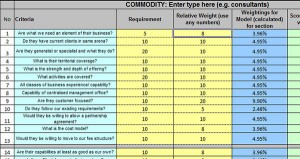Let’s consider the picture above for a brief moment. We know that each vehicle here is going to be a different make, model, specification and colour, but from our initial view point all we can see is a very similar array of vehicles. Asked to chose the best one for any particular purpose (other than maybe size), we are going to have to use guess work and it will be a lot more luck than judgement if we get it right.
The snow which so confuses the issue here is like a marketing campaign or a very good sales person; unless you get beneath the outer layer, you can only judge on what you see. We tend to view this as an issue in the world of procurement from a sense of buying poor goods or services from a very good sales force, but over the years we have found that increasingly it can translate as missing a superb offering because of an inexperienced way of selling.
Running full blown RFI’s will always get to the core of an offering and on a large spend or critical piece of outsourcing this has to be the way forward unless you have an intimate market knowledge. If you don’t and it’s a crowded market, the question is how do you devise your short-list first? For every tender you issue, someone is going to have to score it, and if you really want to be focussing your energies on evaluating the cream rather than working through the, well, not so creamy.
To that end, we at BDUK have always employed a short-listing comparison tool to whittle down the market to a more suitable and manageable number of companies to then approach.
Not only does this make our life’s simpler, but we have learnt the hard way that to run a short-list tender with the short-list leaves us wide open when a friend of the board has a company doing exactly what we are buying and we not only did not include them, but have nothing in the way of justification as to why.
Self preservation. It should be our company motto.






